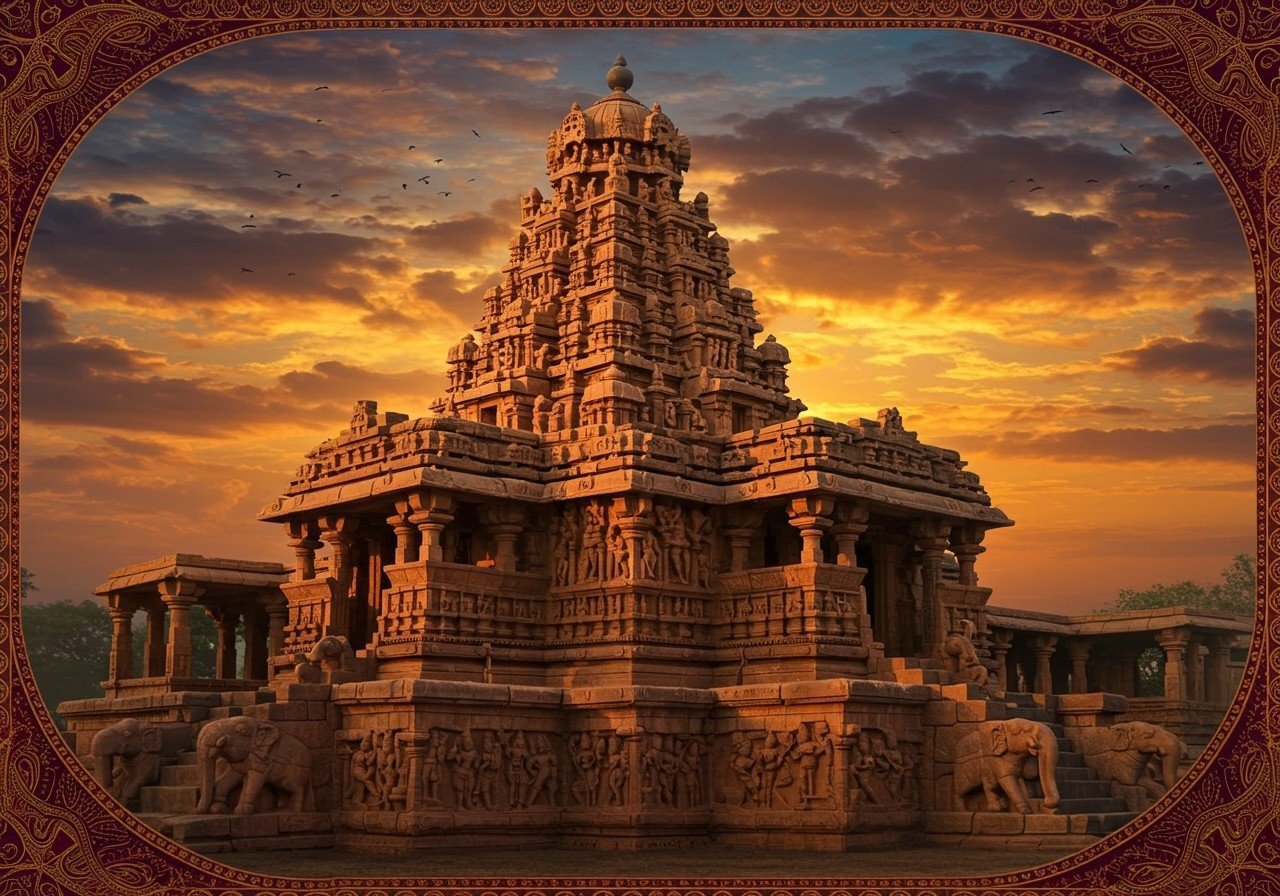
The Chalukya Dynasty, a prominent power in ancient and medieval India (6th-12th centuries), left an indelible mark on the subcontinent’s cultural landscape. Their reign saw a flourishing of art, architecture, and cultural practices that continue to inspire awe and admiration today. This blog delves into the rich heritage of the Chalukyas, exploring their architectural marvels, artistic achievements, and enduring legacy.
Historical Overview
Emerging in the 6th century, the Chalukya Dynasty branched into three major lines: the Badami Chalukyas, the Eastern Chalukyas, and the Western Chalukyas. Among their notable rulers, Pulakeshin II stands out for his military prowess and patronage of the arts. The dynasty’s interactions with neighboring empires, such as the Pallavas and Rashtrakutas, fostered trade and cultural exchange.
Chalukya Architecture
Chalukya architecture is renowned for its distinctive Vesara style, a harmonious blend of the Nagara (North Indian) and Dravida (South Indian) styles. The Badami cave temples, carved directly into sandstone cliffs, exemplify their mastery of rock-cut architecture. The Western Chalukyas, ruling in the Deccan region, further developed the Vesara style with structural temples like the Kalleshwara Temple at Bagali (c. 11th century) and the Mahadeva Temple at Itagi (c. 12th century), showcasing ornate pillars, intricate relief work, and stunning sculptural details.
Notable examples of Chalukyan architecture include the temples at Aihole, Pattadakal, and Badami. These sites showcase the dynasty’s innovative approach to temple design and construction, leaving behind a legacy of architectural brilliance that continues to inspire today.
Chalukya Art
Under the Chalukyas, art flourished in diverse forms, from sculpture and painting to iconography and metalwork. Temple walls came alive with bas-reliefs and friezes depicting mythological scenes and scenes from daily life. Royal patronage played a crucial role in nurturing artistic talent, leading to the creation of masterpieces like the iconic Nataraja statue from the Badami caves. Chalukya art influenced later styles, including the Vijayanagara and Hoysala, showcasing its lasting impact on Indian art history.
Chalukya Culture
The Chalukyas nurtured a vibrant cultural atmosphere, contributing significantly to literature, music, and dance. Classical Kannada literature witnessed a golden age with renowned poets like Pampa and Ranna. They promoted classical dance forms like Bharatanatyam and Carnatic music, enriching the performing arts. The dynasty’s embrace of religious diversity, supporting Hinduism, Jainism, and Buddhism, fostered a rich tapestry of philosophical and spiritual thought. Their advancements in trade and agriculture further contributed to a thriving society.
Enduring Legacy
The Chalukya Dynasty’s influence on Indian culture remains profound. Their architectural innovations, artistic achievements, and cultural contributions continue to resonate in modern traditions, festivals, and rituals. Preservation efforts for heritage sites ensure that their magnificent monuments, like those at Pattadakal, a UNESCO World Heritage Site, are celebrated and cherished for generations to come. The Chalukya legacy shapes regional identities and fosters cultural pride, serving as a testament to a dynasty that shaped the course of Indian history.
How Poojn.in Connects You to Chalukyan Heritage
Poojn.in, India’s leading store for cultural goods and services, offers a unique opportunity to connect with the rich traditions of the Chalukya Dynasty. Our collection includes:
- Traditional Puja Items: Experience the reverence of Chalukyan rituals with authentic puja items, handcrafted with care and attention to detail. We offer a wide selection of items used in traditional ceremonies, allowing you to connect with the spiritual practices of the era. Explore our collection and bring the sanctity of Chalukyan worship into your home.
- Sacred Sculptures and Idols: Adorn your space with exquisite sculptures and idols inspired by Chalukyan art. These meticulously crafted pieces capture the artistic essence of the dynasty, bringing a touch of history and spirituality to your home or altar. Discover the beauty and symbolism of Chalukyan art through our curated collection.
- Temple-Grade Lamps and Incense Holders: Illuminate your sacred space with temple-grade lamps and incense holders reminiscent of those used in Chalukyan temples. Crafted from high-quality materials, these items evoke the ambiance of ancient rituals, creating a serene and reverent atmosphere. Enhance your worship experience with these beautifully designed pieces.
At Poojn.in, we are committed to providing high-quality, authentic items that honor the rich cultural heritage of India. Visit us today to explore our collection and discover how you can incorporate the timeless traditions of the Chalukya Dynasty into your life.
FAQs on the Chalukya Dynasty
What architectural style did the Chalukyas develop? The Chalukyas developed the Vesara style, a unique blend of North Indian (Nagara) and South Indian (Dravida) architectural elements. This style is characterized by intricate carvings, ornate pillars, and a harmonious balance between elaborate detail and structural integrity.
What are some must-visit Chalukyan sites? The UNESCO World Heritage Site of Pattadakal, along with Aihole and Badami, are essential destinations for anyone interested in Chalukyan architecture. These sites showcase the evolution of the Vesara style and offer a glimpse into the dynasty’s artistic and engineering prowess.
How did the Chalukyas contribute to religious diversity? The Chalukyas demonstrated a remarkable tolerance and support for multiple religions, including Hinduism, Jainism, and Buddhism. This fostered a vibrant intellectual and spiritual environment, leading to the construction of temples and monuments dedicated to various deities and philosophies.


